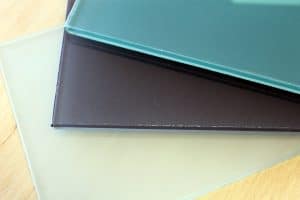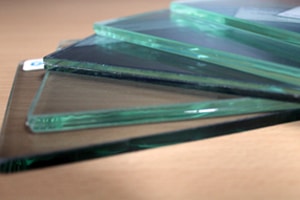There is a huge range in the glass types available when designing the windows and doors in your new home. Or when you’re looking to replace those in your current home.
When making up a double glazed unit – also known as an insulated glass unit (IGU) – homeowners have a large choice in the glass types they would like. The glass that is used in window and door combinations can be customised to suit individual preferences. This includes different combinations of thickness, size, tint colour, and film.
Typically, Winsulation offers the following types of glass combinations, as seen below:
Clear (Annealed) Float Glass
Clear float glass is the basic glass most commonly used in windows and doors. Clear float glass provides high transmission of light. Float glass can be clear or coloured and is produced in large sheets. It can be modified as outlined below to improve its qualities.
Toughened Safety Glass
Toughened safety glass is up to five times stronger than clear float glass. It offers the highest resistance to impact and is therefore commonly used in glass doors. The toughening process reduces the risk of thermal breakage.
Laminated Safety Glass
Laminated glass is a popular choice for residential and commercial windows and doors. It is made up of two or more layers of glass permanently bonded together by heat and pressure with a polyvinyl butyral (PVB) interlayer. This layer holds the glass panels together so that if broken, the glass remains intact. The laminated layer can also assist in blocking out up to 99% of UV rays. This makes laminated glass a very safe option for glass windows and doors. Laminated glass also has good sound and insulation properties and is available in clear, tinted, reflective, and low-e glass.
Tinted Glass

Tinted glass is used primarily for solar control, meaning that it reduces direct heat energy from the sun coming in through your windows. Tinted glass also reduces glare, which is why it is commonly seen in car windows. The most common colours in tinted glass are grey, bronze, green, and blue.
Reflective Glass
Reflective glass has a special metallic coating that limits or restricts people from looking inside your home or office. However, the coating does not stop those inside from looking out. The benefits of reflective glass are that it allows natural light into a building but reduces any glare. Reflective glass can also be made up into IGUs and combined with low-e glass for even greater thermal and energy efficiency. Reflective glass comes in a wide range of colours including grey, bronze, green, and blue.
Low-e Glass
The ‘e’ in low-e glass refers to emissivity. Emissivity is the ability of a material or surface to radiate heat/energy. Low-e glass therefore refers to a glass surface that minimises the amount of solar heat gain. This is achieved through the application of a special coating that is made of a microscopic, transparent metal or metal oxide on one surface of the glass. This coating minimises UV light and heat passing through the glass, but does not limit the amount of visible light. Low-e glass improves thermal insulation and therefore helps reduce heating and energy costs. Low-e glass is used on all double glazed units.
Low-e glass is available annealed, toughened, and laminated.
As you can see, there are many combinations in the glass types that you can choose from.

